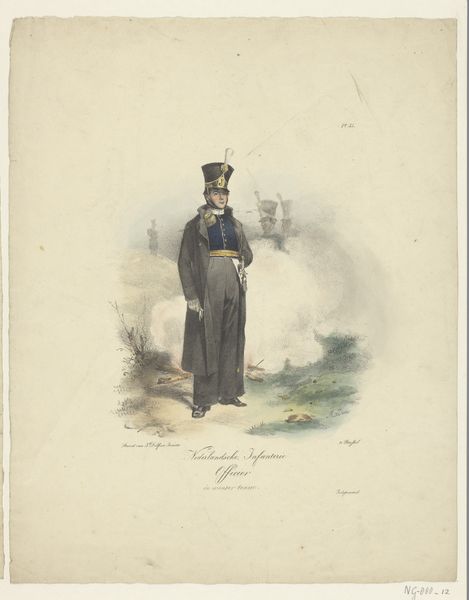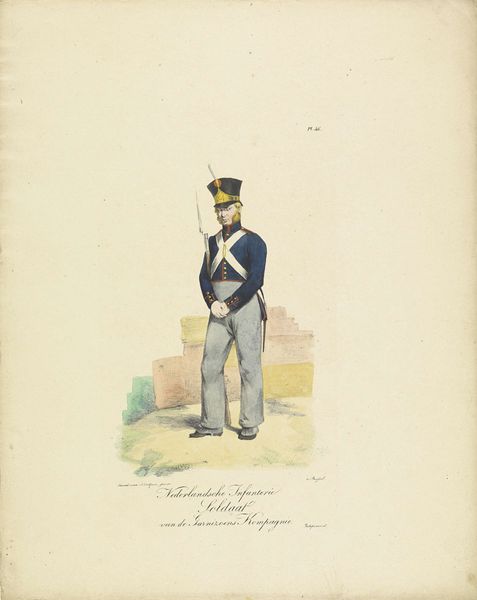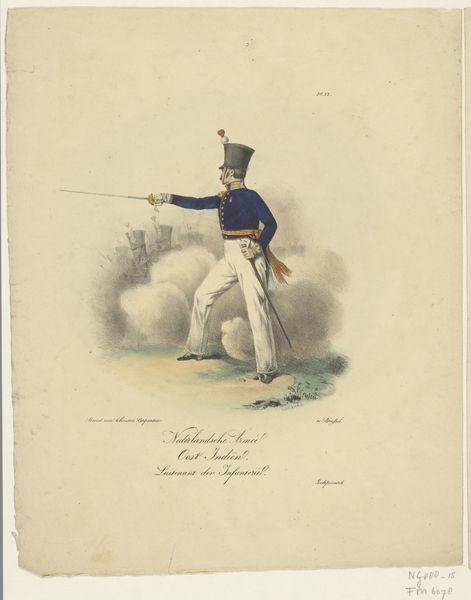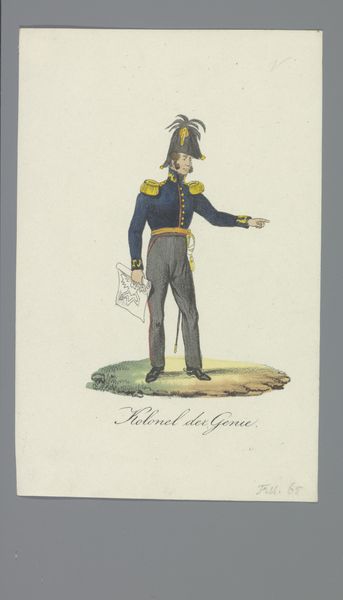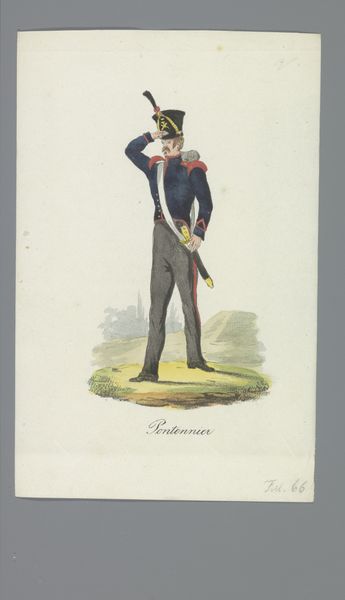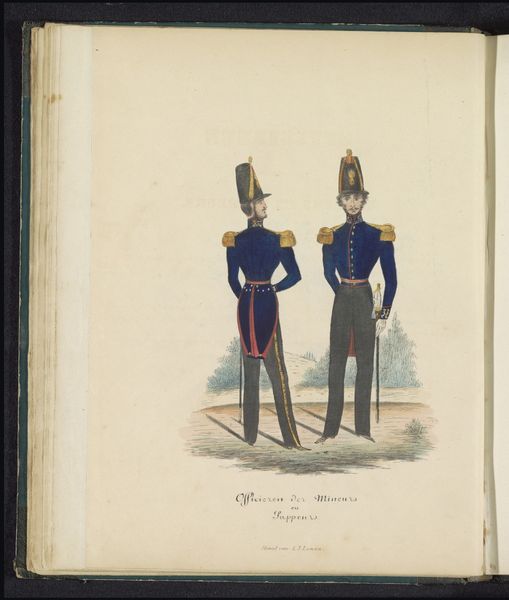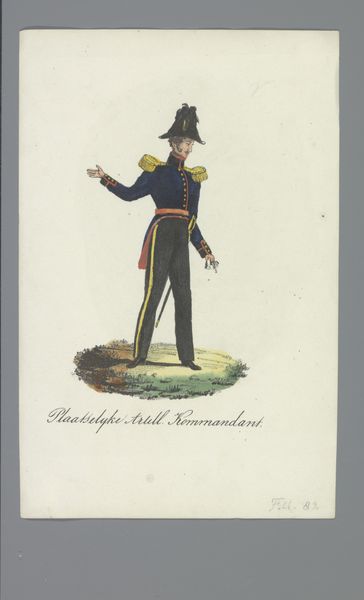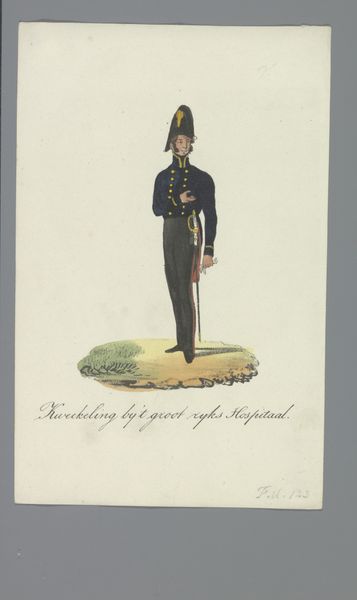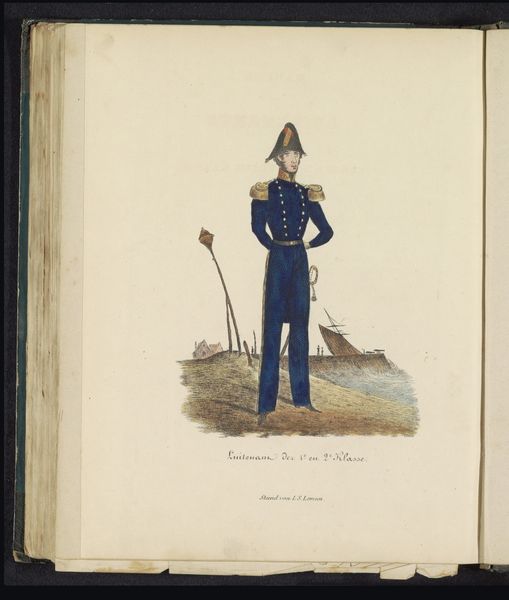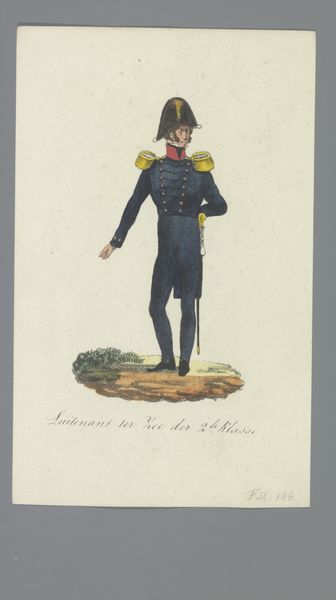
Nederlandsche Kavalerie / Hussaren, Officier in kleine winter tenue 1823 - 1827
0:00
0:00
drawing, pen
#
portrait
#
drawing
#
imaginative character sketch
#
aged paper
#
light pencil work
#
quirky sketch
#
personal sketchbook
#
idea generation sketch
#
romanticism
#
sketchbook drawing
#
pen
#
watercolour illustration
#
storyboard and sketchbook work
#
sketchbook art
Dimensions: height 364 mm, width 291 mm
Copyright: Rijks Museum: Open Domain
Jean-Baptiste Madou created this print of a Dutch cavalry officer, employing lithography, a process that democratized image-making in the 19th century. Lithography involves drawing on a flat stone or metal plate with a greasy crayon, then treating the surface so that ink adheres only to the drawn areas. It’s a method ideally suited to mass production, yet capable of capturing fine detail. Look closely, and you’ll see the subtle tonal variations Madou achieved, giving depth to the officer's uniform and the surrounding scene. The choice of lithography speaks volumes about the changing art world of Madou's time. Unlike traditional engravings, which required highly skilled artisans, lithography allowed artists to create relatively inexpensive prints. This made art more accessible to a wider audience, reflecting a shift in patronage from the elite to the emerging middle class. Ultimately, Madou's print serves as a reminder that even seemingly straightforward images are embedded in complex social and economic contexts. The materials and methods used in their creation play a crucial role in shaping their meaning and impact.
Comments
No comments
Be the first to comment and join the conversation on the ultimate creative platform.

